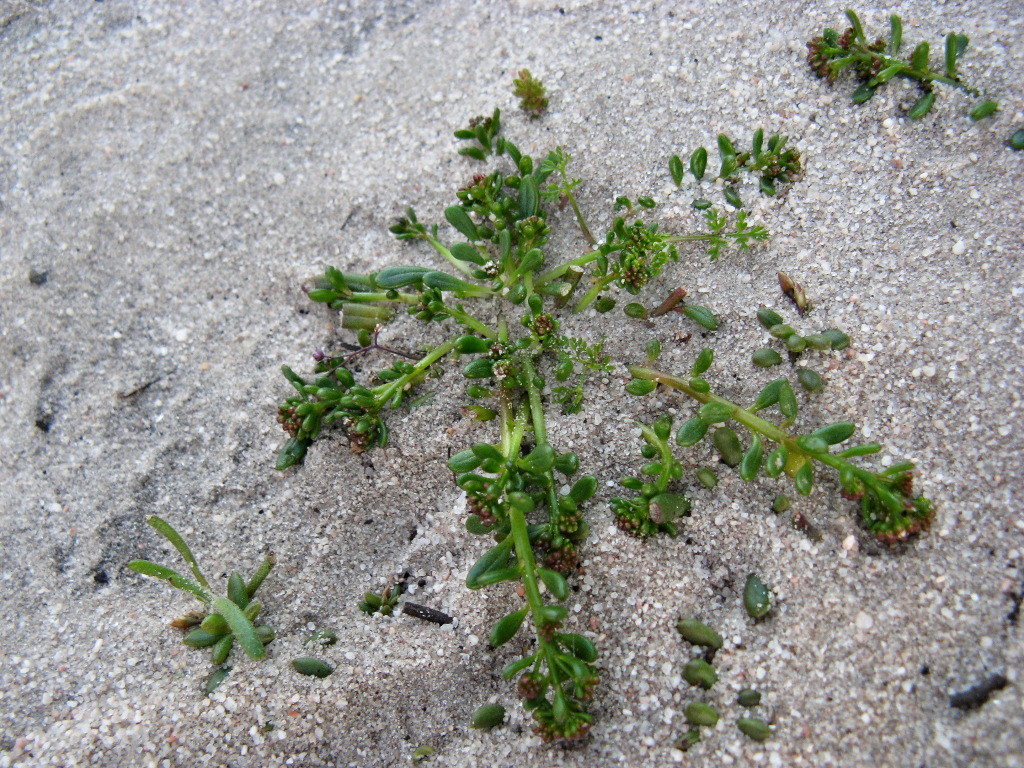Calandrinia corrigioloides
F.Muell. ex Benth. Strap PurslaneProstrate annual, stems to c. 25 cm long, usually narrowly branched. Leaves basal and on flowering stems, oblong to obovate, the largest 0.5–2.5 cm long, 1–4 mm wide, subsessile, glabrous. Flowers usually numerous, ±clustered in compact cymes; bracts solitary, the larger leaf-like; pedicels to c. 1 mm long, not or barely elongating but often recurving in fruit; sepals broad-elliptic, obtuse to truncate, c. 1 mm long at anthesis, enlarging to c. 2.5 mm in fruit, persistent; petals 4 or 5, barely exceeding sepals, white or pale pink, often cohering over the ovary after anthesis and weakly adherent as a ‘cap’ over the elongating fruit; stamens 3 or 4; style trifid to base. Capsule cylindric, about twice as long as sepals, pale, splitting to about midway into 3 valves; seeds 1–3, (rarely 4), circular to broadly elliptic, c. 1 mm diam., shining black, virtually smooth with faint concentric patterning. Flowers Aug.–Nov.
LoM, MuM, Wim, RobP, GipP, WPro. Also WA, SA. Occurs on sand-dunes and sandstone outcrops in mallee country of the north-west, with an extraordinary disjunct occurrence at Wilsons Promontory, near the mouth of Darby River. Often abundant following fire, otherwise rather uncommon.
Walsh, N.G. (1996). Portulacaceae. In: Walsh, N.G.; Entwisle, T.J., Flora of Victoria Vol. 3, Dicotyledons Winteraceae to Myrtaceae, pp. 215–224. Inkata Press, Melbourne.
 Spinning
Spinning

